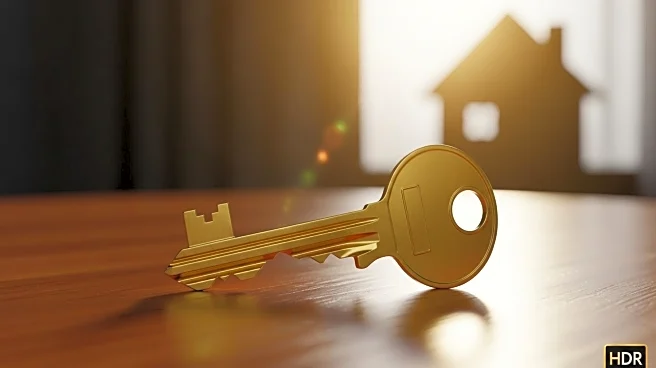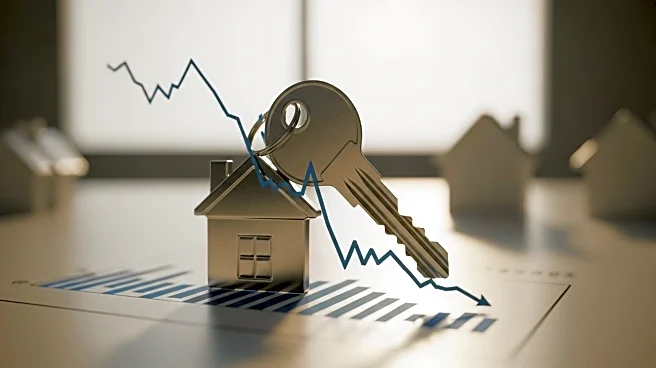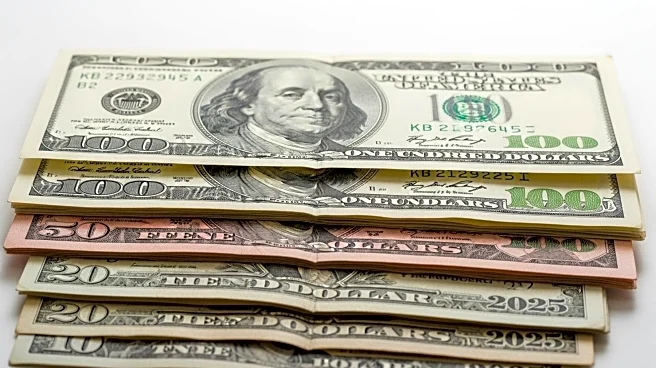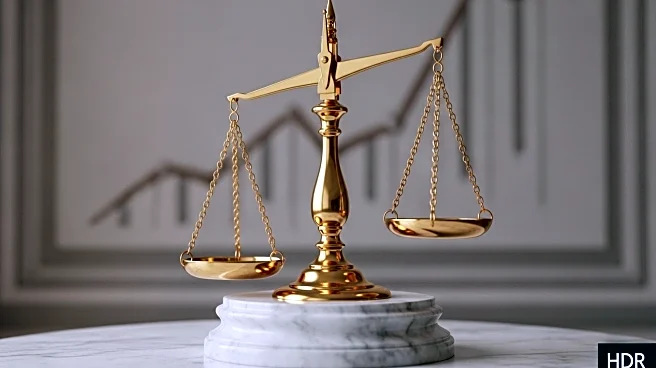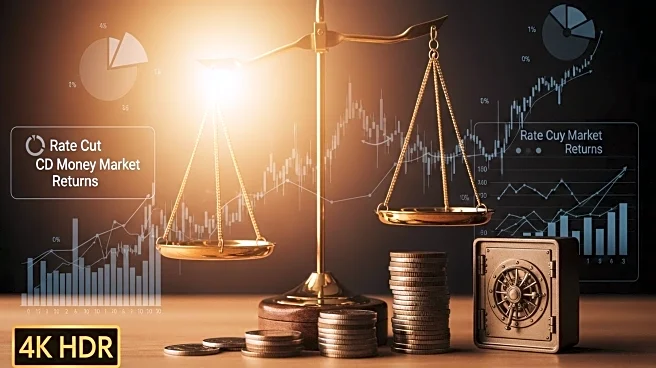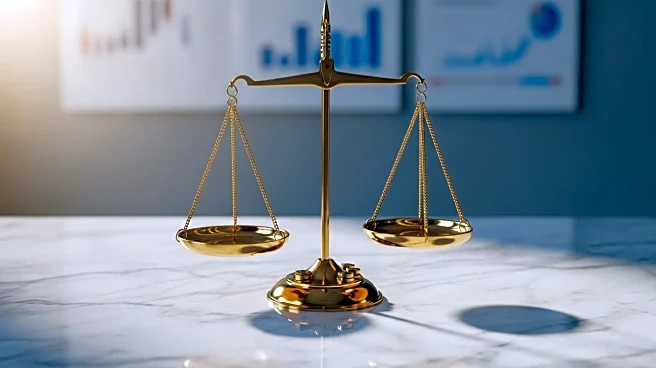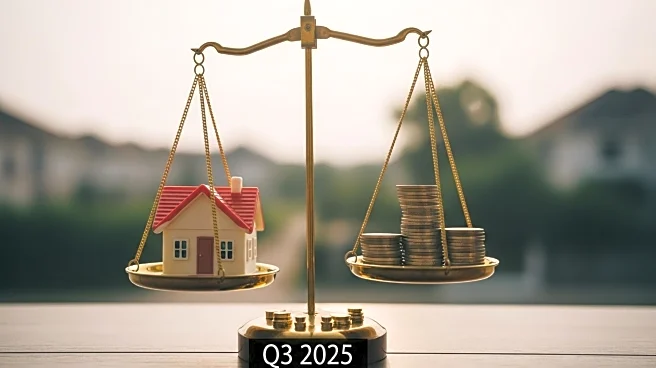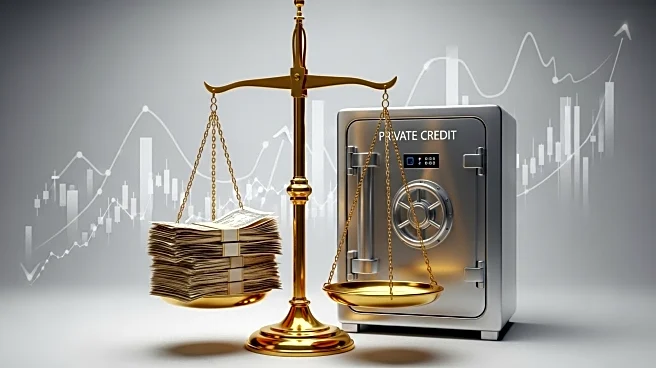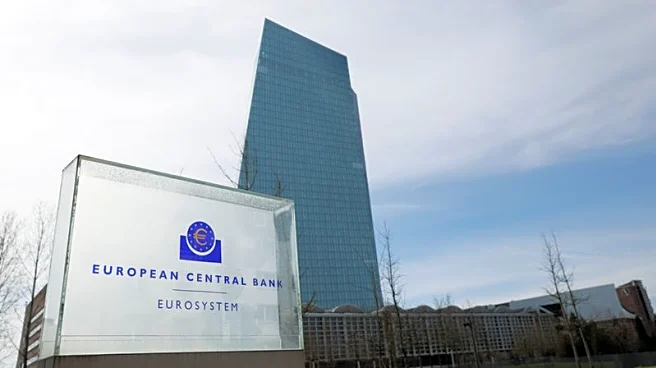What is the story about?
What's Happening?
Home equity loan rates have dropped to their lowest point in 2025, reaching 8.22%, according to Bankrate data. This decline follows earlier reductions over the summer, making home equity loans comparable to home equity lines of credit (HELOCs) as affordable borrowing options. The fixed nature of home equity loan rates provides protection against market fluctuations, unlike the variable rates of HELOCs. With close to $18 trillion in total equity available, homeowners have significant borrowing potential. However, borrowers must consider the risks, as failure to repay could lead to foreclosure.
Why It's Important?
The drop in home equity loan rates presents a significant opportunity for homeowners seeking financing. With substantial equity available, these loans offer a cost-effective borrowing method compared to personal loans or credit cards. The fixed interest rates provide stability amid market uncertainties, appealing to those wary of fluctuating rates. Additionally, using home equity loans for eligible home improvements may offer tax deductions, further enhancing their attractiveness. This development could stimulate economic activity as homeowners leverage their equity for various projects.
What's Next?
Homeowners considering home equity loans must weigh the benefits against potential risks, such as foreclosure. They should also evaluate whether rates might fall further, impacting the timing of their borrowing decisions. Consulting with lenders and tax specialists can help navigate the complexities of using home equity loans for specific purposes. As rates remain low, more homeowners may explore these loans, potentially influencing the housing market and broader economic trends.
Beyond the Headlines
The decline in home equity loan rates may have broader implications for the housing market and financial sector. As more homeowners tap into their equity, there could be increased demand for home improvement services and related industries. Additionally, the stability offered by fixed rates might encourage more conservative financial planning among borrowers, impacting consumer spending patterns. The interplay between equity borrowing and market conditions could shape future lending practices and economic policies.
AI Generated Content
Do you find this article useful?
